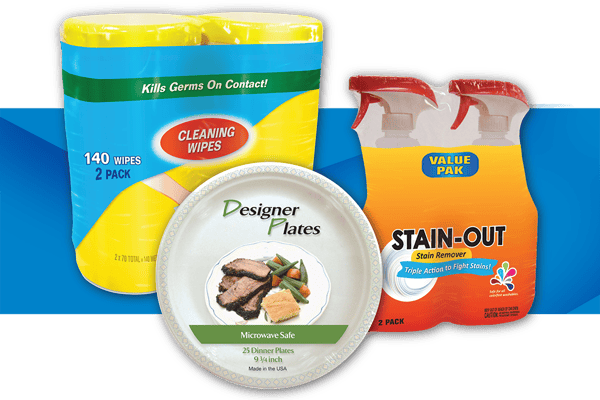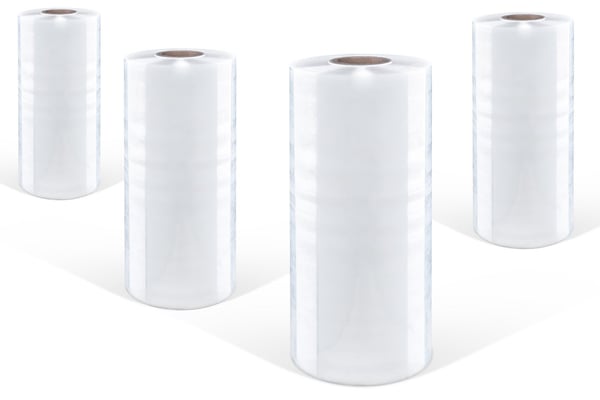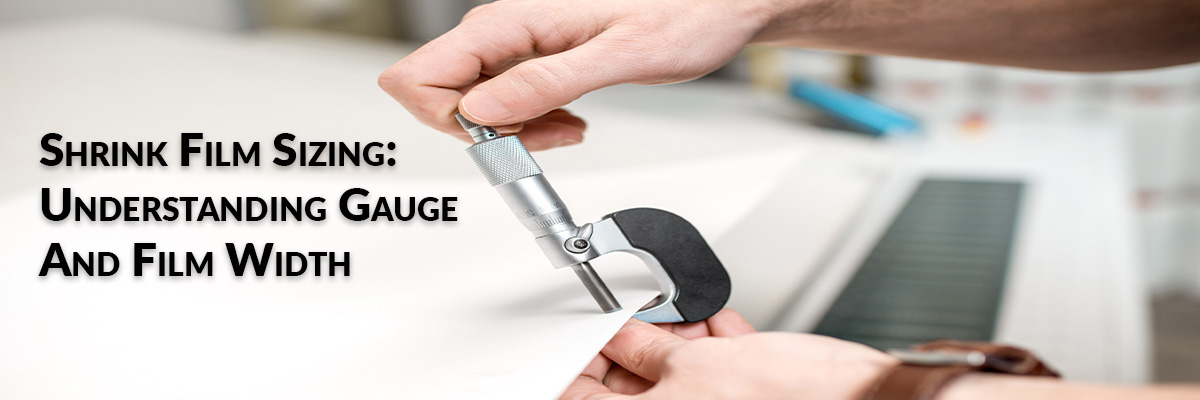Shrink Film Sizing: Understanding Gauge And Film Width
The Business of Packaging | Packaging Design | Shipping Protection
When searching for materials for your shrink wrapping machinery, choosing the right gauge and width of film can be challenging at times. You may find yourself thinking about the specifications of film you should utilize.
In the article below, I outline the most common gauges of shrink film and will make suggestions for your needs based upon the products you are packaging. I will also provide guidance on film width. Once you have the knowledge below, shopping for shrink film will be a breeze.
What Is Shrink Film Gauge?
When someone is talking about the gauge of shrink film, they are referring to the thickness of the film. To reiterate, gauge is a measurement of thickness. The higher the gauge of shrink film, the thicker the shrink film is. Shrink film thickness is measured by gauge or mil. Mil thickness is the actual measurement standard. Gauge is an industry nickname for describing mil thickness.
A “mil” equals one thousandth of an inch (.001 inch). Interestingly, in our industry, when people are talking about premium shrink film, they talk about gauge, e.g., 75 gauge, 100 gauge, 125 gauge, etc. When people talk about polyethylene, they talk in mils, e.g., one mill, one and one half mil, two mill, etc.
To convert mills to gauge, multiply the number of mills by 100. This is the conversion factor. For example, 1 mil times 100 is 100 gauge. The following chart details thickness conversions for your film measurements:
|
Gauge |
Mil |
|
45 |
0.45 |
|
60 |
0.6 |
|
75 |
0.75 |
|
100 |
1 |
|
125 |
1.25 |
*Note that the smaller the gauge, the thinner the film as opposed to different materials like jewelry, where a 14 gauge would be smaller than a 0 gauge. A 45 gauge film is thinner than a 100 gauge film.

Most Commonly Used Shrink Film Gauges:
45 gauge. The majority of today's customers are using 45 gauge and some are using lighter (we have a few customers who are already using 35 gauge film). Due to higher technology resins and advanced extrusion equipment, light gauge films are stronger than ever before. Light gauge films reduce costs and provide more footage per roll, which reduces change overs, product handling and trash.
Other gauges of shrink film that are sometimes used include: 60, 75, 100, 125 and 150 gauge films. The majority of shrink wrapping packaging machinery can run the above gauges with ease, but you will want to work with your vendor to help you choose the right gauge of film for your particular applications.
Now, some applications may demand gauges of shrink film that are thicker or thinner than the gauges above. Some products may have odd shapes, temperature restrictions and other dynamics that can play into the need for atypical shrink film gauges.
If you are not sure which gauge is the best choice for your products, it would be wise to have a professional analysis of your packaging line conducted by your vendor.
The data collected can then be sent to other vendors who can provide their recommendations on the same applications. Once this process is completed, you can cross reference each vendors recommendations and fine tune the information within to find the perfect fit for your packaging lines specific needs.
Need Help Calculating Shrink Film Width?
How To Calculate Shrink Film Width
There are many elements involved in determining the proper film width. These include:
- Package Height
- Package Width
This is called the Cross Direction (CD). It is the measurement that runs opposite to the direction of travel of the product through the packaging line. - Package Shape
Is it symmetrical, like a box, or odd shaped, like a football? - Type Of Sealer Used
Manual (L-Sealer)
Automatic
Automatic L-Sealer
Side Sealer
Horizontal Form/Fill/Seal (Scrapless systems)
The determination of the proper film width is based on understanding the elements highlighted above. If you are using a Horizontal F/F/S system, which incorporates a fixed film forming plow, the film is sized to the dimensions of the forming plow NOT to the package dimensions.
Once the forming plow dimensions are established, the film width is a function of those dimensions plus an allowance for the overlap seal. When sizing the plow, the goal is to make the inside dimensions as small as possible to accept the product, while allowing enough wiggle room for any slight variations in your product.
If you are using equipment that seals the film and leaves a trailing scrap, or trim edge, that will be disposed of. Selecting the proper film width requires that you provide enough width to maintain the integrity of the trim edge. On automatic machines, this trim edge will be mechanically removed, either by a vacuum or a film winder.
If the trim edge is too narrow, it will often break. This will prevent the automatic accumulation of the trim edge and shut down your line. If the trim edge is wider than needed, you are throwing away money, and creating unnecessary extra trash or recycling. Certain types of automatic machines use wider centerfold widths than others. Automatic L-Sealers are well know for requiring wider film than other types of automatics.
Keep in mind that as the height of the package increases, extra film is required to allow the film to drape down from the top and lift up from the bottom to meet in the middle where the seal is made. For example, a product that is 8” wide by 4” high will need wider film than a product that is 11” wide and 1” high.
There is a little known significant opportunity for cost reduction based on ordering film in fractions of an inch. For instance, if you can use 9 ½” wide film, rather than 10”, you have a savings of 5%! These savings can be significant, especially if you are a large volume user. Typically, shrink films can be ordered in 1/4" increments, and in some cases 1/8” increments.
There is an important caveat here. Many users of centerfolded (CF) shrink film typically purchase their film in 1” increments for a number of reasons. Most distributors stock centerfolded film in one inch increments. Additionally, custom widths have higher minimums and longer lead times. That being said, if your volume justifies it, consider reducing your film width by fractions of an inch. We can help with this...
In determining the proper film width, the actual length of the package is irrelevant. The length, or the machine direction (MD), is important in determining the “cut-off”, or amount of film used on each package. This is used for determining how many packages you will get from each roll. Like film width, the cut-off can potentially be reduced to save cost.
If you are not thrilled at the prospect of doing the math yourself, have no fear! With our Shrink Film Width Calculator, we have taken the work and drudgery out of the process!
Need Help Calculating Shrink Film Width?

Further Considerations
Every packaging line is different and it is recommended that you get regular line audits and preventative maintenance of your packaging machines to ensure their peak performance. These audits can also reveal opportunities to change your film gauges which may result in significant cost savings.
When it comes to choosing the right shrink film there are multiple factors that must be taken into consideration. From environmental concerns to pricing, there are various dynamics that may have an effect on your decision making process. Another important question to consider would be which is better for your business, clear or printed shrink film?
Once you have decided upon the type of shrink that is right for you, you must figure out which gauge of said film is best suited to properly package your products.
Depending on the type of products you are packaging, the amount of products being packaged, and the size of the products you will be shrink wrapping, certain gauges will not be a good fit while others will get the job done correctly.
When it comes to choosing the right gauge of shrink film for your packaging line and your specific products, reaching out to your vendor and requesting an analysis of your packaging line is recommended.
In addition to recommendations on the correct gauge of shrink film, it would be smart to consider further recommendations on materials and machinery based upon the data collected from the analysis.
Conclusion
An on-going preventative maintenance program is an excellent way to ensure regular inspections and trouble shooting of your equipment and materials. These will generally result in a smooth running packaging line with little downtime.
Once you have implemented the correct materials and machinery, it would be a good idea to consider a regular inspection of your lines KPIs (Key Performance Indicators) to maximize productivity, reduce downtime and ensure the best possible speed to market and quality of production.
When choosing a vendor for your packaging materials, machinery and technical services, it would do you well to talk with three different vendors. Once you have compared the capabilities of each vendor you will be well equipped with the appropriate knowledge to choose the vendor that best suites your packaging lines unique needs.
As time moves on, it is important to ask your chosen vendor for continual reporting on the speed, quality and efficiency of your packaging line. Furthermore, the machinery it utilizes and the materials it is running should also be reviewed on a regular basis.
A quarterly review is a good way to ensure all of the above and should be easily provided by your vendor. Once you have completed implementing all of the above, your packaging line should be the envy of all your competitors.
And while it is only one dynamic of your packaging line's potential success, using the right gauge of shrink film and proper width can save you thousands of dollars over time. It is a very important piece of the puzzle when it comes to running a great and productive packaging line. In the end, taking the time to ensure that you are using the right gauge and width is time well spent.
About Nathan Dube
As the Digital Marketing Specialist at Industrial Packaging, I am honored to create content for such a phenomenal company and work with one of the greatest teams in the Packaging Industry. Whether creating a video, writing blog posts or generating other pieces of content and multimedia, I am always excited to help educate and inspire our prospects and clients to reach their highest potential in regards to their packaging processes and needs.




